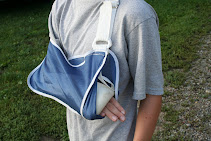On March 24, 2008, Orange County Deputy Sheriff Michael C. Matranga was on-duty and driving a department-owned Ford Crown Victoria on Interstate 405 when he lost control of his car while fiddling or adjusting the radio.
He swerved and crashed against Shawn Robinson’s 1998 Volvo which caused it to hit another car carrying Barbara Stanfield.
Both Stanfield and Robinson and his 16-year old daughter were injured in the multi-vehicle crash. Shawn Robinson suffered severe injuries, his right leg was shattered, his left hip was cracked, the muscles in his right hand were ripped and his right ear was torn in half. He spent four months in the hospital but still hasn’t fully recovered from the accident.
Recently, the county has agreed to settle the lawsuit filed by Robinson and will pay him $1 million worth of damages. The county has also previously paid $ 75,000 to Stanfield.
John McDonald, the spokesman for the sheriff’s department, said that accidents are an unfortunate fact of life in the department as they have more than 140 cars on the road 24 hours a day. Meanwhile, its sheriff, Sandra Hutchens has initiated a review on how to discern, avoid and better handle such “critical incidents”.
Regardless of how many vehicles there are on the road, the fact is, most accidents happen because driver error, not because of the quantity or volume of traffic.
Most motor vehicle crashes occur 3 seconds after a distraction so even the mere act of fiddling with a radio or checking a text message can trigger a fatal or severe collision. Distracted driving is one of the leading causes of car accidents as well as near-crashes. In a study conducted by the National Highway Traffic Safety Administration, these are the primary actions which cause distracted driving:
• Use of cell phone or other handheld and mobile device
• Reaching for or adjusting an object inside the vehicle
• Looking out the window of your vehicle and staring at objects and events
• Reading
• Eating
• Talking
• Applying make-up
To be able to discern, avoid and better handle such distracted driving accidents, here are some tips you can follow:
• Do not text or talk on your cell phone while operating your motor vehicle. All calls and messages should be made and sent before and after your drive.
• Adjust any of your vehicle’s controls whether radio, climate, seat, window, before you drive. When making further adjustments, do it during normal stops (ex. red light).
• Keep both eyes and your attention on the road. Make sure to keep both hands on the steering wheel to adequately control your vehicle.
He swerved and crashed against Shawn Robinson’s 1998 Volvo which caused it to hit another car carrying Barbara Stanfield.
Both Stanfield and Robinson and his 16-year old daughter were injured in the multi-vehicle crash. Shawn Robinson suffered severe injuries, his right leg was shattered, his left hip was cracked, the muscles in his right hand were ripped and his right ear was torn in half. He spent four months in the hospital but still hasn’t fully recovered from the accident.
Recently, the county has agreed to settle the lawsuit filed by Robinson and will pay him $1 million worth of damages. The county has also previously paid $ 75,000 to Stanfield.
John McDonald, the spokesman for the sheriff’s department, said that accidents are an unfortunate fact of life in the department as they have more than 140 cars on the road 24 hours a day. Meanwhile, its sheriff, Sandra Hutchens has initiated a review on how to discern, avoid and better handle such “critical incidents”.
Regardless of how many vehicles there are on the road, the fact is, most accidents happen because driver error, not because of the quantity or volume of traffic.
Most motor vehicle crashes occur 3 seconds after a distraction so even the mere act of fiddling with a radio or checking a text message can trigger a fatal or severe collision. Distracted driving is one of the leading causes of car accidents as well as near-crashes. In a study conducted by the National Highway Traffic Safety Administration, these are the primary actions which cause distracted driving:
• Use of cell phone or other handheld and mobile device
• Reaching for or adjusting an object inside the vehicle
• Looking out the window of your vehicle and staring at objects and events
• Reading
• Eating
• Talking
• Applying make-up
To be able to discern, avoid and better handle such distracted driving accidents, here are some tips you can follow:
• Do not text or talk on your cell phone while operating your motor vehicle. All calls and messages should be made and sent before and after your drive.
• Adjust any of your vehicle’s controls whether radio, climate, seat, window, before you drive. When making further adjustments, do it during normal stops (ex. red light).
• Keep both eyes and your attention on the road. Make sure to keep both hands on the steering wheel to adequately control your vehicle.



